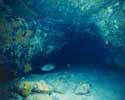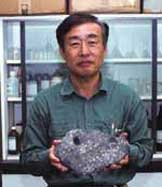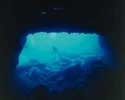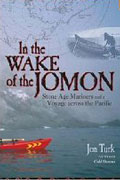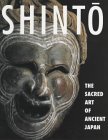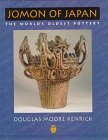|
After a decade of dedicated research involving more the 100 dives underwater off the coast of the island of Yonaguni-jima, Professor Masaaki Kimura has obviously developed an ‘eye for detail’ when it comes to spotting anomalous features on the sea-floor.
If a particular feature of an ancient structure found on land is encountered in an underwater structure, it takes a trained eye to recognise it as such.
One good example is the castle of ‘Nakagusuku’ on Okinawa, which has a perfect ‘semi-circular’ inward curve, and this is typical of gusuku (castles) of the Ryukyu Dynasty in the 13th century.
This semi-circular feature has also been found in the ‘Nakagusuku’ structure on the sea-floor not far from the ‘No.1 Monument’.
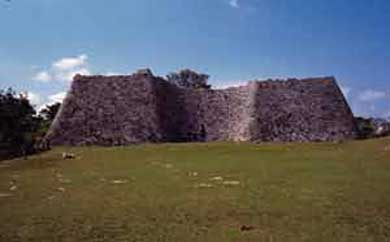
—
Okinawa, Japan
—
In the diagram below you can see the ‘underwater Nakagusuku’ highlighted in brown next to the ‘Gosintai’ structure, a short distance away from the ‘No.1 Monument’ in the direction of the ‘Stadium’.
The semi-circular curve on the right of the ‘underwater Nakagusuku’, which is in the same style of castle-wall structure as on the Okinawan gusukus, faces south of east in the direction of the mid-winter solstice sunrise.
During the last Ice Age, when many believe that these structures were last above sea-level, and when the North Pole was in the Hudson’s Bay area, ‘North’ would have been slightly different to what it is today in the Yonaguni region.
It will indeed be very interesting if, in the course of Professor Kimura’s continuing research, he finds that the underwater ruins at Yonaguni have major axis that reflect the direction of the ‘Old North Pole’.
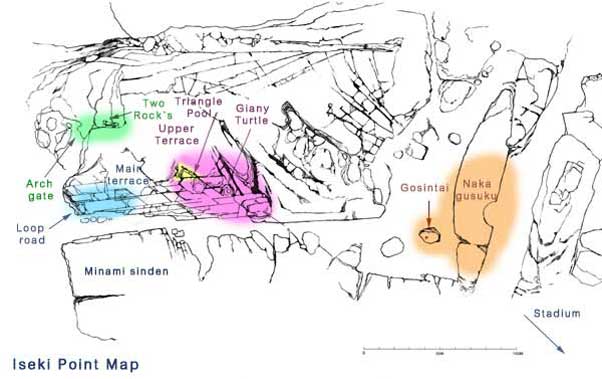
—
Okinawa, Japan
—
The images below are of the mysterious ‘gusuku cave’ that extends inward, and slopes downward, under the gusuku structure.
The two images showing the entrance are taken from the outside of the cave looking towards the semi-circular wall feature (top), and (bottom) from the inside of the cave looking out.
It is clear for everyone to see that the entrance has been ‘artificially shaped’, and this is not something that it is possible to imagine anyone would undertake to do to an ‘underwater’ cave.
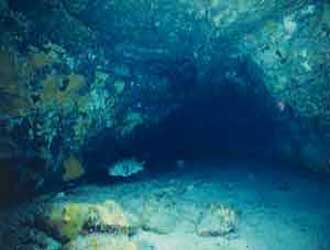
—
Okinawa, Japan
—
It was obviously made, and used, in the distant past when the area was last above sea-level, and currently the cave is blocked by an enormous accumulation of soil and sand to a depth of approximately 50 feet.
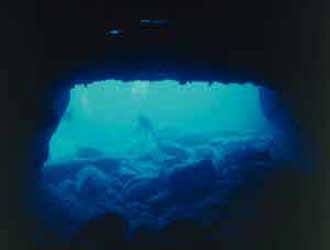
—
Okinawa, Japan
—
When it becomes feasible to excavate under the accumulated rubble that has built up over countless centuries, this ‘cave’ could well hold some surprises for those who currently promote the “brutish cave-man” view of prehistory that we are currently led to believe was all there was during the last Ice Age.
Was it the ancient entrance to the ‘Gusuku’, or perhaps the start of a tunnel that led to the ‘No.1 Monument’ itself?
History’s Mysteries
“Do undersea relics near Okinawa offer proof of a sophisticated civilization during the last ice age?
Archeologists have long believed that civilization as they define it — intelligent, tool-making, monument building, social humans — began about 5,000 years ago.
But submerged beneath the waves near the Japanese island of Yonaguni is evidence that may well overturn that long-held theory.
A small but persuasive number of scholars and scientists have long thought that “advanced” societies may have existed as long as 10,000 years ago.
Their theories, however well reasoned and defended, have been hamstrung by a lack of evidence.
But recent discoveries of man-made artifacts on the Pacific seafloor may well prove to be the smoking gun that will propel this alternative view of civilization to prominence”.
see the evidence with ‘unique underwater footage’
of the various Yonaguni structures in the
‘History Channel’ TV programme
“Japan’s Mysterious Pyramids”
NTSC DVD
or
VHS
|

